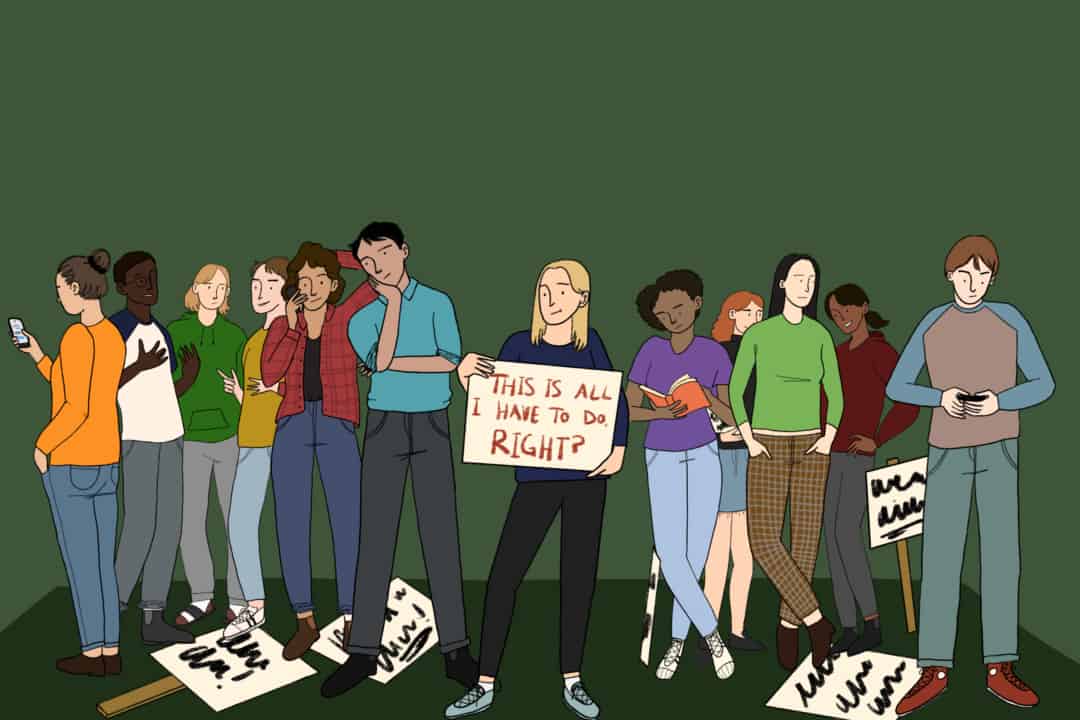Internationally, youth activists and youth movements are creating unprecedented change. In a survey of over 6,000 participants in the current Hong Kong protests, a Chinese University of Hong Kong survey reported that more than 57 per cent of participants were under the age of 30. Sixty-one per cent of Sudan’s population is under the age of 25, and many of them were on the streets earlier this year, demonstrating against the corrupt government of President Omar al-Bashir. In Chile, the protests against the rise in transit fares, which sparked the current movement, were started by high-school students.
Of course, the trials Hong Kong, Chile, and Sudan have faced are incomparable to the day-to-day lives of Torontonians. However, the radical action that each youth-led movement embraces in those protests sends a very clear message, especially as we face Canada’s role in the climate crisis: we can do more. If, against all odds, these movements have managed to change government policy, we certainly should be able to do so as well.
Consistency is key
This past September, the Global Climate Strikes in Canada were a wonderful expression of just how many people cared and wanted to see change. The protests amassed around 500,000 people in Montréal and 100,000 in Vancouver. Toronto, however, saw only 15,000 people march — a relatively disappointing number. Students here at the University of Toronto are also not doing enough. Aptly put by fellow student and head of the Friday’s for Future Toronto chapter Allie Rougeot in a previous Varsity article, “This school doesn’t feel like it’s resisting at all.”
Rougeot initially believed in a moderate transition instead of a revolutionary solution to the climate crisis. But after taking into account the fact that the root causes of the crisis were profit-seeking companies denying the climate crisis and extractive colonialism, she could no longer continue to ask for or invest in minor, moderately applied bandage solution to a rapidly-growing wound.
While the protests generated great energy across the country, we have not since seen the tangible, radical change that is necessary to address the crisis. When the same numbers are needed in subsequent efforts, when the cameras are gone, we simply aren’t there. Looking back now, it’s become an expression of just how, in Toronto, we aren’t as committed as we claim to be.
When Greta Thunberg began her movement in 2018, she protested in front of the Swedish parliament in order to demand Sweden meet their emissions reduction target. Now, she strikes every Friday, hence the name Fridays for Future. In Toronto, what we can take away from Thunberg and other youth-led protests is that consistent, sustained action is key.
Had they stopped their fight when the cameras were no longer on — when all there was to post on social media were dumpster fires and tear gas — nothing would’ve changed. They only have the power they do because they were persistent in their passion. They knew that if they did not protest, no one else would.
The clock is ticking
It is vital that we do the same here when it comes to our own political action.
Political dissent isn’t ineffective, but the limited scope of action that we’ve been seeing at the University of Toronto and in Canada as a whole, is. Considering that the future of the planet is at stake, we simply cannot allow this to continue.
Especially now, as we stare down the barrel of the climate crisis, we must act. Just recently, the Intergovernmental Panel on Climate Change reported that the “climate crisis [is] reducing land’s ability to sustain humanity.” The document should be read as a terrifying plea for life.
That is exactly what the climate crisis is. People have died and will continue to do so, populations have been displaced, and here in Canada, we are warming at a rate twice as high as any other country in the world.
There are droves of solutions, most including widespread, aggressive divestment in fossil fuels. We cannot continue to build pipelines and invest in the tar sands. The list goes on and on, yet students with the power to demand change are simply not showing up. We are not consistently and aggressively holding our government and corporations responsible for their lack of action.
When we do act, when we show the power we have, change is made without fail. The government has to listen when we speak. It might be cliché to reiterate, but the power is truly in the hands of the people and especially in the hands of the students.
The government is not doing nearly enough. And yet, apathy on campus and in the country could convince anyone that they are. We seem to be waiting for someone to tell us when the next march is and whom to follow.
But the longer we wait and the more time we spend agonizing over the fact that our leaders aren’t listening is time we could spend making them listen. Those in power with the tools to create the change we need are ready to say how high — we need to stop waiting for somebody else to say “jump.”
Nadine Waiganjo is a second-year International Relations student at University College. Waiganjo is a columnist for The Varsity’s comment section.


